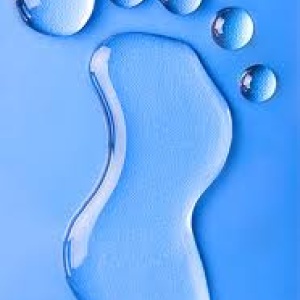
This paper finds that the water footprint of agricultural products (a definition that presumably includes non-food products) accounts for 91% of the EU’s production-related water footprint and 89% of its consumption related footpint. It argues that much more water can be saved by modifying diets and reducing food waste than through the traditional water-saving routes highlighted in mainstream awareness raising campaigns. The paper echoes others that find animal products to be particularly water intensive.
Citation and abstract as follows: Vanham D and Bidoglio G (2013). A review on the indicator water footprint for the EU28 Ecological Indicators 26, 61–75
The water footprint (WF) is an indicator that accounts for both the direct (domestic water use) and indirect (water required to produce industrial and agricultural products) water use of a consumer or producer. This paper makes a review on the WF indicator and its applicability for EU28 (EU27 and Croatia) policy. More particularly the volumetric WF assessment approach of the Water Footprint Network (WFN) is reviewed. A synthesis of existing national WF accounting quantities results in an EU28 WF of production (WFprod) of 3420 lcd (609 km3/yr) and a WF of consumption (WFcons) of 4815 lcd (857 km3/yr). Of the latter 60% is internal and 40% is external to Europe. The EU28 is a net virtual water importer. The WF of agricultural products contributes by far the largest fraction of the total WF, i.e. 91% of the total Wfprod and 89% of the WFcons. With traditional water use statistics, awareness campaigns and policy have always focused on increasing water efficiency in domestic and industrial water use. However, much more water can be saved in agricultural production processes, by reducing food waste and by a change in diet of the average EU consumer. Together with a comprehensive overview on possible ways to reduce WF, this paper provides a critical review on the WF methodology, showing that the development of the WF concept is still not complete. Practical complexities with data (availability of and inconsistencies in the underlying databases) are a concern. Some conceptual aspects need to be further developed and tested, not at least the indicators for sustainability assessment. The most important limitation is the fact that it is a partial tool to be used in combination with other analytical means or indicators when determining integrated policy options. Nevertheless, its main strength is the possibility to show the importance of consumption patterns and global dimensions in water governance.
You can download the paper here (subscription access only).
For more on water issues (including the water footprinting and virtual water concepts) see here.



Post a new comment »